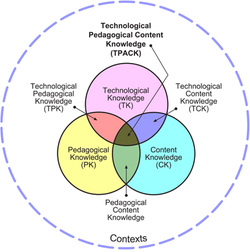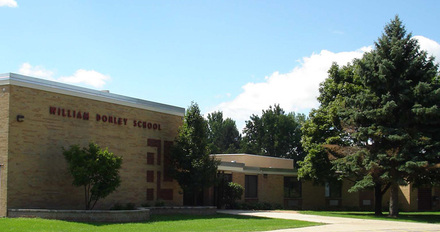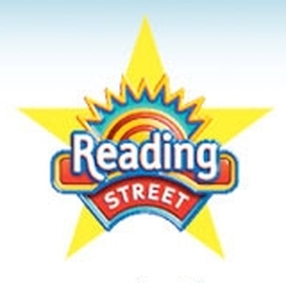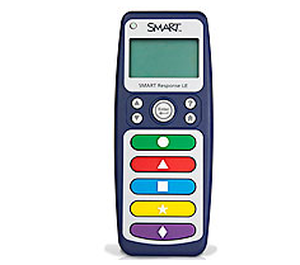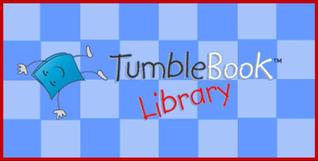Context
I work as a first grade teacher, at Donley Elementary School, in East Lansing Public Schools. Donley is home to a very diverse student population from both a socioeconomic and ethnic standpoint. Donley serves over 300 students, over 90 of which are considered at-risk in regards to their literacy abilities. Many of Donley's students come from families with a history of academic failure, incarceration, and substance abuse problems.
This past year, my classroom consisted of 19 students (10 girls and 9 boys). Due to the current budget crisis, however, our district was forced to layoff many teachers for the upcoming school year, thus increasing our incoming class sizes. Throughout the past year, I quickly discovered that given the multitude of issues many of my students are facing at home, I find I often spend more time dealing with my students' social, emotional, and behavioral issues than I actually do on teaching curriculum. One of the first things I realized this year was that, often times, “learning” was the last thing my students cared about. . Even at such a young age, many of my students already have a negative attitude towards learning, and engaging them, in literacy-related activities especially, often proved very difficult. As I reflect back on my first year of teaching and look forward to next year, I have a lot of anxiety about what literacy learning will look like in my classroom and, furthermore, what my students’ level of engagement will be. This anxiety is furthered by our district’s recent decision to adopt a new reading program for the upcoming school year. Given the fast-paced, highly technological, immediate gratification seeking society we live in, I wonder how a basal-centered reading program will ever engage or motivate my students as literacy learners?!
In regards to the kind of technology infrastructure and support that we have at Donley, we happen to be the only elementary school in the district with a "full" computer lab. These computers, however, are old and out-of-date and are often very slow and difficult to use, especially when they are constantly breaking down. This past year, our school received an anonymous donation, which made it possible for every classroom to have a SMART Board. Each classroom is also equipped with an Epson projector, an AVerMedia document camera, and sound system. Our school has also purchased a subscription to Tumblebooks.com, and thus has access to a wide variety of audio books. We have one set of upper elementary SMART Response Clickers and are waiting on approval of a grant for a set of lower elementary SMART Response Clickers. I have also used my own funds to purchase eight MP3 players for my classroom.
In regards to the kind of technology infrastructure and support that we have at Donley, we happen to be the only elementary school in the district with a "full" computer lab. These computers, however, are old and out-of-date and are often very slow and difficult to use, especially when they are constantly breaking down. This past year, our school received an anonymous donation, which made it possible for every classroom to have a SMART Board. Each classroom is also equipped with an Epson projector, an AVerMedia document camera, and sound system. Our school has also purchased a subscription to Tumblebooks.com, and thus has access to a wide variety of audio books. We have one set of upper elementary SMART Response Clickers and are waiting on approval of a grant for a set of lower elementary SMART Response Clickers. I have also used my own funds to purchase eight MP3 players for my classroom.
Content
The literacy content being covered is the 5 Big Ideas of Beginning Reading Instruction. The 5 big ideas are as follows:
1. Phonemic Awareness: The ability to hear and manipulate sounds in spoken words and the understanding that spoken words and syllables are made up of sequences of speech sounds (Yopp, 1992).
2. The Alphabetic Principle (or Phonics): The understanding that words are composed of letters that represent sounds and the ability to transfer this knowledge to writing activities.
3. Fluency (automaticity): The ability to read words with no noticeable cognitive or mental effort. It is having mastered word recognition skills to the point of overlearning. Fundamental skills are so "automatic" that they do not require conscious attention (as defined by the University of Oregon’s College of Education).
4. Vocabulary: There are two types of vocabulary. The first is expressive vocabulary, or the words one uses when speaking. The second is receptive vocabulary, or the words that a person recognizes and understands well enough to comprehend them when read or heard.
5. Comprehension: The complex cognitive process involving the intentional interaction between reader and text to
extract meaning (as defined by the University of Oregon’s College of Education).
In years past, teachers have had to use their own literacy resources, to create a reader's workshops centered around these 5 big ideas of beginning literacy instruction. This year, however, our district has adopted a reading program for teachers to use for their core literacy instruction. The reading program, Reading Street, has recently been adopted by many of our surrounding districts and has been subject to much criticism by teachers for being too labor-intensive, as well as for it's basal-centered approach to literacy instruction.
Overall, it is my job as a first grade teacher to have my students reading and writing by the end of first grade. Specifically, in regards to the Common Core State Standards (First Grade, Reading: Foundational Skills), students need to be able to:
-Understand and recognize the basic concepts of print.
-Demonstrate understanding of spoken words, syllables, and sounds (phonemes).
-Know and apply grade-level phonics and word analysis skills in decoding words.
-Read with sufficient accuracy and fluency to support comprehension.
Challenges to Teaching the Content
One of the greatest challenge I face as a teacher when it comes to my students literacy development, is their varying levels of abilities. Many of my students come to me barely knowing their letter-sound relationships, while others are reading at a second or third grade level. Thus, differentiating instruction to meet the needs of all of my students is often a daunting task.
Another challenge, as stated above in the context section, is the multitude of social and emotional issues my students are faced with in their home-life circumstances, and their everyday lives. These issues often interfere with my students' ability to focus during literacy activities, their level of engagement during literacy activities, as well as their motivation and attitude towards their own literacy development.
1. Phonemic Awareness: The ability to hear and manipulate sounds in spoken words and the understanding that spoken words and syllables are made up of sequences of speech sounds (Yopp, 1992).
2. The Alphabetic Principle (or Phonics): The understanding that words are composed of letters that represent sounds and the ability to transfer this knowledge to writing activities.
3. Fluency (automaticity): The ability to read words with no noticeable cognitive or mental effort. It is having mastered word recognition skills to the point of overlearning. Fundamental skills are so "automatic" that they do not require conscious attention (as defined by the University of Oregon’s College of Education).
4. Vocabulary: There are two types of vocabulary. The first is expressive vocabulary, or the words one uses when speaking. The second is receptive vocabulary, or the words that a person recognizes and understands well enough to comprehend them when read or heard.
5. Comprehension: The complex cognitive process involving the intentional interaction between reader and text to
extract meaning (as defined by the University of Oregon’s College of Education).
In years past, teachers have had to use their own literacy resources, to create a reader's workshops centered around these 5 big ideas of beginning literacy instruction. This year, however, our district has adopted a reading program for teachers to use for their core literacy instruction. The reading program, Reading Street, has recently been adopted by many of our surrounding districts and has been subject to much criticism by teachers for being too labor-intensive, as well as for it's basal-centered approach to literacy instruction.
Overall, it is my job as a first grade teacher to have my students reading and writing by the end of first grade. Specifically, in regards to the Common Core State Standards (First Grade, Reading: Foundational Skills), students need to be able to:
-Understand and recognize the basic concepts of print.
-Demonstrate understanding of spoken words, syllables, and sounds (phonemes).
-Know and apply grade-level phonics and word analysis skills in decoding words.
-Read with sufficient accuracy and fluency to support comprehension.
Challenges to Teaching the Content
One of the greatest challenge I face as a teacher when it comes to my students literacy development, is their varying levels of abilities. Many of my students come to me barely knowing their letter-sound relationships, while others are reading at a second or third grade level. Thus, differentiating instruction to meet the needs of all of my students is often a daunting task.
Another challenge, as stated above in the context section, is the multitude of social and emotional issues my students are faced with in their home-life circumstances, and their everyday lives. These issues often interfere with my students' ability to focus during literacy activities, their level of engagement during literacy activities, as well as their motivation and attitude towards their own literacy development.
Technology
There are a couple of different technologies I plan on incorporating into my Dream IT project. Below you will find pictures of the technologies, along with an explanation of how I plan on using them as part of my Dream IT project.
The core reading program our district has adopted for the upcoming school year, Reading Street, includes multiple online components. For example, many of the programs leveled reading books are available in audio book format on the program's website. The website also gives teachers access to lesson plans for teachers, as well as student activity pages and game to go along with the weekly topics/readings. Furthermore, the program provides assessments that are available for students to take online. I can create individual accounts for each of my students to keep track of their assessment progress throughout the year. The assessments are graded automatically, saving me time and giving me immediate feedback so I can adjust my instruction and the activities we're working on, as necessary.
Another technology I relied heavily on throughout my first year of teaching, and will continue to use, is my SMART Board. This interactive whiteboard has done wonders for my students' level of engagement and motivation. The SMART Board can also be used as a classroom and behavior management tool. For example, I use the SMART Board to have the students make their daily literacy center choices on. I will also use the SMART Board for the majority of the online components offered by Reading Street. I can use the SMART Board fro whole group activities, small group activities, as well as individual activities. Overall, I have found that the opportunity to come up and manipulate objects on the SMART Board has been one of the greatest motivations for students to stay attentive during whole group and small group activities.
Another technology I plan on integrating into my classroom and using in collaboration with my SMART Board, are the lower elementary version of the SMART Response Clickers. The clickers are fun and easy to use. The biggest appeal of using the SMART Response Clickers is that they hold students individually accountable for being active participants in the corresponding activities; they help students to be responsible for their own learning. Furthermore, they shift activities from being teacher-directed, to being student-directed, as the students are ultimately running the activity using the SMART Response Clickers. They also allow the teacher to guide the activities as they can see who is and who is not participating. Finally, they offer teachers immediate feedback on their students' performance, giving teachers the opportunity to adjust instruction and activities as necessary.
A technology I personally purchased for my classroom was a set of eight MP3 players. Initially, I only used the MP3 players as a literacy center choice. If the students chose "Listening to Reading" as a literacy center choice during our reader's workshop, they were able to listen to audio books on the MP3 players while following along in the book. Eventually, however, as part of my Wicked Problem Projects for CEP 812, I began letting my most at-risk students record their own audio books and listen to them as a literacy center choice. This proved to increase students' level of engagement and motivation during our reader's workshop, as well as their sight word vocabulary recognition, their fluency and accuracy, and their decoding skills. I plan on continuing to use the MP3 players as a literacy center choice, as well as using them as a sort of "running record" reading assessment to track student progress, and also as a means of letting students record their own audio books. Again, I feel this technology will help increase students' level of engagement and motivation during our reader's workshop, as well as helps them to take responsibility for their own literacy development.
Another technology available at our school is Tumblebooks.com. Tumblebooks.com is an online resource that offers audio books, written and recorded by popular children's authors. The stories are narrated for the students, with the words being highlighted as read. The website also includes lesson plans and various online activities to go along with each story. Furthermore, the books are categorized by grade level, so they are easy to find and convenient to use.
Pedagogy
The learning theory that I feel best fits my Dream IT project is the cognitive theory of learning which presents the assumption humans are logical beings that make the choices that make the most sense to them. Up until this point in their educational careers, many of my students were not fully proficient in reading and writing. What I typically notice at the beginning of the year is the use of symbols, lines, pictures and scribbling in my students writing, as their form of written communication. Although it may not always make sense to some who is literate when it comes to the English language, it made perfect sense to the young author. Likewise, when it comes to reading, students use visual clues such as pictures or beginning letters of words to make their own sense and explanations of texts. Throughout the year, however, as students learn and grow and build on their prior knowledge and experiences of how the world works, they grow in their literacy development and learn how to read and write properly. This relates to Piaget's theory of cognitive development that children are active thinkers, constantly trying to construct more advanced understandings of the world. As noted in our reading, The Power of Children's Thinking, "At all ages, children do observe and investigate, collect data, think, reason, and draw conclusions. As they explore, children organize what’s around them, building their own schemes and structures and conceptions." Likewise, "Another characteristic of children’s thinking is tenacity. Children do not want to give up the concepts and theories they work so hard to make. They take their experiences and struggle to come up with understandings that work in their daily lives. They are not about to drop their ideas just because someone says so, or because an event disproves what they have come to believe." Thus, when working towards my Dream IT project goal, I will have to take my students' zone of proximal development into consideration as it pertains to their literacy development, so as to properly scaffold for them, as well as help correct any misconceptions they may have.
In regards to pedagogy, I will implore a wide variety of teaching strategies to accomplish my Dream It project, including:
In regards to pedagogy, I will implore a wide variety of teaching strategies to accomplish my Dream It project, including:
- Whole Group Instruction
- Small Group Instruction
- One-on-One Instruction
- Self Discovery
The Total PACKage
The overall goal of my Dream IT project is to use several different technologies to engage and motivate my students during literacy activities. It is my hope that I can foster a love of and appreciate for literacy within my students, and encourage them to be lifelong literacy learners. Thus, the big idea behind my Dream It project is to use a variety of technologies to motivate and engage my students in literacy activities in order to further their literacy development and help them take responsibility for their own learning.
The core reading program, Reading Street, encompasses the content I am seeking to teach (The 5 Big Ideas of Beginning Reading Instruction). The Reading Street program provides motivating and engaging literature, scientifically research-based instructional practices, a wide variety of online components and resources. The program places a heavy emphasis on continuous progress-monitoring throughout the year, and provides both formative and summative assessments for each unit of the program. Furthermore, using these assessments, teachers can form their small groups and differentiate instruction as the program provides literature and activities for below-level, at-level, and above-level students. Thus, the reading program makes it possible to implore a wide variety of teaching strategies - whole group, small group, individual, etc.
While the reading program provides and content and pedagogy, the technology will hopefully provide the motivation and engagement. As stated above, the SMART Board will be used for a wide variety of whole group and small group literacy activities. Many of the SMART Board files have been created by me and the other first grade teachers in my district, while other activities are provided online, as part of the Reading Street and Tumblebooks programs. Along with the use of the SMART Board, I will also use the SMART Response Clickers. The clickers will be used to hold students personally accountable for their participation, as well as provide me with immediate feedback on student performance. This way, I can adjust instruction and activities as necessary to meet the individual needs of my students. The students will also participate in a wide variety of online games, activities and assessments as part of the Reading Street program. Using the school's computer lab, each student will have his or her own computer, along with their own student account as part of the Reading Street program, to engage in a wide variety of literacy activities. Again, as each student will have his or her own online account with Reading Street, I will be able to receive immediate feedback on their level of participation and performance, and will ultimately be able to adjust my instruction to meet each student's individual needs. Finally, the MP3 players will be used for multiple purposes. First, the MP3 players (along with Audactiy software), will be used to have students record their own audio books periodically. These audio books will be used as running records of sorts to track student progress, as well as for them to listen to as a literacy center choice. This way, students are in control of their own learning and will hopefully have more focus and motivation during independent reading time.
Again, my overall goal is to use the Reading Street program in collaboration with the above mentioned pedagogies and technologies to increase my students' level of engagement when it comes to literacy activities. Furthermore, my long term goal is to foster a love of and appreciation for literacy within my students, and inspire them to become lifelong literacy learners.
The core reading program, Reading Street, encompasses the content I am seeking to teach (The 5 Big Ideas of Beginning Reading Instruction). The Reading Street program provides motivating and engaging literature, scientifically research-based instructional practices, a wide variety of online components and resources. The program places a heavy emphasis on continuous progress-monitoring throughout the year, and provides both formative and summative assessments for each unit of the program. Furthermore, using these assessments, teachers can form their small groups and differentiate instruction as the program provides literature and activities for below-level, at-level, and above-level students. Thus, the reading program makes it possible to implore a wide variety of teaching strategies - whole group, small group, individual, etc.
While the reading program provides and content and pedagogy, the technology will hopefully provide the motivation and engagement. As stated above, the SMART Board will be used for a wide variety of whole group and small group literacy activities. Many of the SMART Board files have been created by me and the other first grade teachers in my district, while other activities are provided online, as part of the Reading Street and Tumblebooks programs. Along with the use of the SMART Board, I will also use the SMART Response Clickers. The clickers will be used to hold students personally accountable for their participation, as well as provide me with immediate feedback on student performance. This way, I can adjust instruction and activities as necessary to meet the individual needs of my students. The students will also participate in a wide variety of online games, activities and assessments as part of the Reading Street program. Using the school's computer lab, each student will have his or her own computer, along with their own student account as part of the Reading Street program, to engage in a wide variety of literacy activities. Again, as each student will have his or her own online account with Reading Street, I will be able to receive immediate feedback on their level of participation and performance, and will ultimately be able to adjust my instruction to meet each student's individual needs. Finally, the MP3 players will be used for multiple purposes. First, the MP3 players (along with Audactiy software), will be used to have students record their own audio books periodically. These audio books will be used as running records of sorts to track student progress, as well as for them to listen to as a literacy center choice. This way, students are in control of their own learning and will hopefully have more focus and motivation during independent reading time.
Again, my overall goal is to use the Reading Street program in collaboration with the above mentioned pedagogies and technologies to increase my students' level of engagement when it comes to literacy activities. Furthermore, my long term goal is to foster a love of and appreciation for literacy within my students, and inspire them to become lifelong literacy learners.
